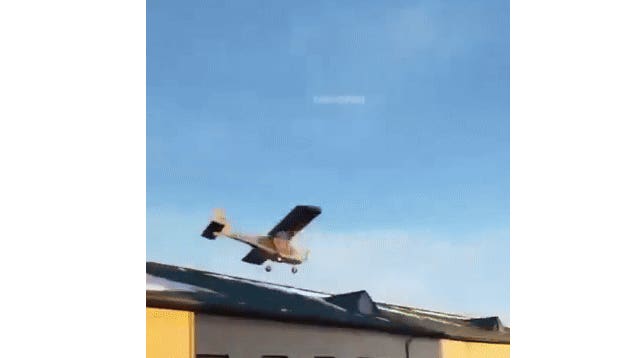Ukraine’s evolving drone warfare capabilities have taken a significant leap forward with the confirmed development of a long-range, reusable unmanned aerial vehicle (UAV). This groundbreaking advancement has the potential to reshape the dynamics of the ongoing conflict with Russia, offering Ukraine a potent new tool for striking deep within enemy territory. The drone’s reported specifications are impressive: a range of 1,200 miles, a payload capacity of 550 pounds, and, crucially, the ability to return to base after completing its mission. This reusable design marks a departure from previous Ukrainian drone tactics, which often involved one-way kamikaze-style attacks.
The newly revealed UAV drastically enhances Ukraine’s strategic options. Its extended range allows it to reach targets far beyond the front lines, deep inside Russia itself. This capability significantly expands the scope of potential targets, including critical infrastructure such as military bases, airfields, and oil facilities. The drone’s ability to deliver a substantial payload, comparable to that of some traditional guided missiles, adds another layer of threat. Instead of relying solely on smaller drones for limited strikes, Ukraine can now utilize this larger UAV to inflict more substantial damage on strategically valuable targets.
What’s particularly remarkable about this development is the apparent adaptation of readily available civilian technology. Evidence suggests the new drone is likely based on a modified Aeroprakt A-22, a light sport aircraft widely used for recreational purposes. This resourceful approach underscores Ukraine’s innovative capacity to transform civilian platforms into effective military assets, maximizing their limited resources while simultaneously minimizing development costs. This adaptive approach has become a hallmark of Ukrainian military innovation throughout the conflict, demonstrating a pragmatic ingenuity in the face of a larger and more conventionally equipped adversary.
The reusability of the new drone presents significant advantages. Unlike expendable drones, which are lost after a single mission, this UAV can be deployed repeatedly, significantly increasing its cost-effectiveness and operational lifespan. This capability, combined with the drone’s long range, allows for a sustained and potentially escalating campaign of deep strikes against Russian targets. Such strikes can disrupt enemy logistics, degrade their ability to launch attacks, and inflict economic damage by targeting key industries like oil production. The cumulative effect of these repeated strikes can significantly impact Russia’s war effort, applying pressure on both its military and economic fronts.
The technical challenge of landing a large drone shouldn’t be underestimated. While piloting a drone remotely is relatively straightforward using GPS and satellite communication, landing safely requires more complex systems. Larger drones like this new Ukrainian variant cannot simply parachute to the ground; they necessitate a controlled landing on a runway. This requires either sophisticated automatic landing systems, which can be expensive and time-consuming to develop and implement, or the alternative – a human pilot taking remote control in the final stages of the flight to guide the drone onto the runway. The Ukrainian military hasn’t disclosed the specific method used for landing their new drone, adding an element of intrigue to its operational capabilities.
The emergence of this new UAV underscores the rapidly evolving landscape of drone warfare, where even smaller nations with limited resources can develop highly effective, disruptive technologies. Ukraine’s successful development and deployment of this long-range, reusable drone sends a powerful message about the democratizing potential of drone technology and its impact on modern conflict. It highlights the importance of innovation and adaptability in asymmetric warfare, where less powerful actors can leverage technology to challenge larger, more conventionally equipped adversaries. The continued development and deployment of such advanced drone capabilities by Ukraine could significantly influence the course of the war, compelling Russia to adapt its strategies and defenses to counter this evolving threat. The impact of this new weapon on the battlefield remains to be seen, but its potential to disrupt the status quo is undeniable.



